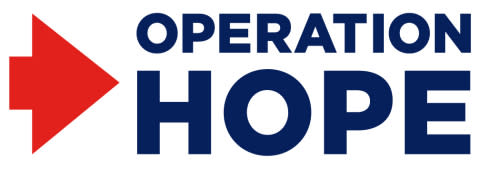“We don’t see the world as it is, we see it as we are.” Anaïs Nin
Recent survey shows Americans are the unhappiest they have been in 50 years. Pandemic and health concerns, social unrest and economic distress have left Americans feeling tired, and living with a constant state of “brain fog” which are just a few symptoms of stress, anxiety, lack of sleep, and poor overall mental health.
People will exercise to help their bodies become fit, but when it comes to mental health, most people do nothing. Let’s be frank, the coronavirus has changed many Americans emotional, financial, and physical health circumstances dramatically and quickly. It’s important to take a holistic approach to your health, financial and emotional well-being. We know that planning for your future is about so much more than your finances – you and your family’s physical and emotional wellness are also a priority.
Time and time again, research has shown that “money cannot buy happiness” and that not only do you need a finite amount of money to be happy, but that prioritizing things like expressing gratitude, friendships, hobbies and family may actually lead to long-term well-being.
Keep physical, emotional and financial health a priority and in the center of your thoughts and daily life.
Overall emotional, physical and financial well-being are what your attempting to holistically achieve. It helps you feel more secure and less stressed in all areas. Sometimes the best thing you can do for your health – and your long-term financial security – is to tune it out the constant negative news. Here are some ways to tune out negativity during uncertain times.
- Put down the smart phone and turn off the news. Allow yourself just one hour of news time each day, preferably in the middle of the day. This ensures you don’t start or end your day anxious. It’s important to stay informed, but once a day should suffice.
- Stay positive and focus on an attitude of gratitude. List the top five (or more) things you’re grateful for each day. Your list may be the same from day to day or it could change based on the past day’s experience. It could be as simple as being thankful for the roof over your head or a smile from a stranger as you walk your neighborhood.
- Get physical and eat healthy. You’ve probably heard it before, and that’s because it’s true – physical activity is just as healthy for your mind as it is for your body. This doesn’t mean you have to participate in high intensity interval training. Start small. Simply going for a walk or doing basic stretches can help keep your mind and body at their best. Additionally, eliminate process foods, refined sugars and saturated fats from your diet. Eat more plant based foods and whole grains.
- Connect with family and friends. Having a strong support system is important during good times, but even more so during challenging ones. Reach out to someone you haven’t talked to in a while to see how they’re doing. Send a text or card or give them a call. If your family is spread out across the country, use digital apps to connect and play games.
- Stick to a schedule. When you’re stressed, it often takes a toll on your sleep schedule. Keeping a consistent routine can help. Get up and go to bed at the same times each day, even on weekends. Know your stress triggers and pay attention when you notice them flaring up.
While it’s important to be aware of what’s going on in the world, focusing on the bad news won’t help your financial strategy, your emotional well-being or your physical health. Remember, you’re in it for the long term.
During the current coronavirus pandemic, instead of ‘social distancing,’ our focus should be on ‘physical distancing’ and ‘social connection.'”
Maintain mental health and emotional well-being
Focus on the now. Worrying about the past or the future isn’t productive. When you start chastising yourself for past mistakes, or seeing disaster around every corner, you’re only creating more stress and anxiety in your life.
It’s important to stop and to take a breath and ask yourself what you can do right now to succeed. Find something to distract you from destructive thoughts and reset your attitude.
Achieving a healthy frame of mind can seem more challenging than in years past.
Having a daily moment of intentional quiet can go a long way toward a better outlook.
Try this five-minute meditation routine that combines both yoga and balance to steady the mind, utilize the breath to become more mindful, and reduce stress.
Mindfulness meditation does, in fact, decreases anxiety and improves self-esteem, studies have shown.
As you move through Mindfulness meditation, focus on deep breathing. Inhale and exhale through the nose, and start by filling up your lungs with air. Then feel the air rise up into the chest. As you exhale, empty the chest first and then feel the stomach deflate like a balloon. This slow, conscious and specific breath pattern aids in focusing the mind to the present moment.
Finally, if your mind wanders easily during this sequence, you can focus on a one-word mantra to recite silently to yourself. Choosing a word like “serenity” or “peace” or “confidence” and syncing your movement with your breath can help transport you to a different world that quiets distractions from the past and future.
References:
- https://www.synchronybank.com/blog/millie/money-and-happiness/https://www.synchronybank.com/blog/millie/money-and-happiness/
- https://apple.news/Am_LnLhs1Q22oltXhOLcRLg











